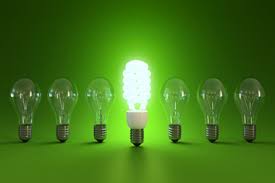Introduction to Energy-Efficient Lighting
Switching to energy-efficient lighting is more than just a trend—it’s an innovative and sustainable choice that continues to gain traction. Not only do these bulbs reduce energy consumption, but they also last longer and perform better than traditional lighting options. By adopting energy saving light bulbs, households and businesses can enjoy significant cost savings and decreased environmental impact.
The move towards energy efficiency is becoming increasingly important as we aim to address climate change and sustainability challenges. Energy-efficient lighting plays a crucial role in this shift, providing a cost-effective and eco-friendly way to reduce energy consumption. With the increasing availability and technological advancements, these lighting solutions are becoming more accessible, allowing more people to contribute to a greener planet.
The Benefits of Choosing Energy-Efficient Bulbs
Choosing energy-efficient light bulbs has numerous benefits, including reduced electricity bills, less frequent replacements, and a lower carbon footprint.
- Cost Savings: Energy-efficient bulbs typically use up to 80% less electricity than traditional incandescent bulbs. This reduction in energy usage translates directly into lower electricity bills. Over time, the initial investment in energy-efficient bulbs pays for itself through the cost savings generated.
- Longer Lifespan: LED bulbs, for example, can last up to 25,000 hours, significantly longer than traditional incandescent bulbs. This extended lifespan means fewer replacements and less waste, contributing to cost savings and environmental benefits.
- Reduced Heat Emission: These bulbs emit less heat, making them safer and more environmentally friendly. Reduced heat emissions also mean that energy-efficient bulbs remain cool to the touch, reducing the risk of burns or fire hazards.
Types of Energy-Efficient Light Bulbs
There are several types of energy-efficient light bulbs, each with its advantages. Understanding these options can help you choose the best type for your needs.
- LED Bulbs: LEDs are among the most energy-efficient and long-lasting options available. They are suitable for various applications, including home and commercial use. LED bulbs provide bright, consistent light and are available in multiple color temperatures to suit different settings. Their energy efficiency and durability make them an excellent choice for minimizing energy consumption and maintenance costs.
- Compact Fluorescent Lamps (CFLs): CFLs are another efficient option, using about 70% less energy than incandescent bulbs. They are a cost-effective alternative for those seeking energy efficiency without a higher upfront investment. CFLs are available in various shapes and sizes, making them versatile for different lighting needs. However, it’s important to note that CFLs contain a small amount of mercury and require proper disposal to avoid environmental contamination.
- Halogen Incandescent Bulbs: These are more efficient than traditional ones and offer a good color rendering. Halogen bulbs produce a bright, natural light ideal for detailed tasks and accent lighting. While they are more energy-efficient than standard incandescent bulbs, halogen bulbs do not match the efficiency levels of LEDs or CFLs. They are a suitable option for those looking for improved energy efficiency while maintaining the familiar lighting quality of incandescent bulbs.
Environmental Impact of Energy-Efficient Bulbs
Switching to energy-efficient lighting has a significant impact on the environment. The reduced energy consumption of these bulbs results in lower greenhouse gas emissions. Widespread use of LED lighting could save approximately 348 TWh of electricity by 2027, corresponding to the annual electrical output of 44 large electric power plants. This shift can significantly reduce the overall carbon footprint associated with electricity production, contributing to efforts to combat climate change.
Additionally, manufacturing energy-efficient bulbs involves fewer hazardous materials than traditional incandescent bulbs, reducing environmental and health risks. For example, LED bulbs do not contain mercury, a toxic element found in CFLs, and their production processes have a lower environmental impact. Using energy-efficient lighting helps conserve natural resources, reduces pollution, and supports a sustainable future.
Frequently Asked Questions
Q: What is the best energy-efficient light bulb for home use?
A: LED bulbs are often recommended for home use due to their long lifespan, energy efficiency, and versatile applications. They provide a bright and consistent light using a fraction of the energy compared to traditional incandescent bulbs. The initial investment in LED bulbs is quickly offset by the significant savings on electricity bills and reduced replacement costs.
Q: Are energy-efficient bulbs more expensive than traditional bulbs?
A: While the initial cost of energy-efficient bulbs like LEDs can be higher, their longer lifespan and lower energy consumption lead to significant cost savings over time. The reduction in electricity usage lowers monthly utility bills and decreases the frequency of bulb replacements, making energy-efficient bulbs a cost-effective choice in the long run.
Q: Do energy-efficient light bulbs require unique disposal methods?
A: CFL bulbs contain a small amount of mercury and should be disposed of properly. Special recycling programs are often available to handle the disposal of CFLs safely. LED bulbs are generally considered safe for regular disposal, but recycling is always preferred. Recycling programs for LED bulbs help recover valuable materials and reduce environmental harm, promoting a more sustainable approach to lighting.
Conclusion
Switching to energy-efficient lighting is an investment that pays off in multiple ways. The benefits are clear, from significant cost savings and improved performance to a lower environmental impact. As technology continues to advance, energy-efficient options will only become more accessible and beneficial for consumers and the planet alike. Embracing these lighting solutions supports personal financial goals and contributes to global sustainability and environmental preservation efforts.



